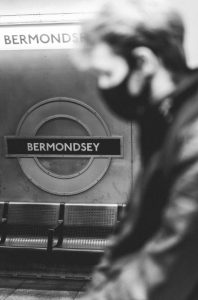If you are an investor property may be something you consider. It may even be your go to rather than other types of asset because you have a tangible brick and mortar building. However, there are plenty of things to think about here. For example, where do you target? What do you do about management? Do you want a rental income? One thing to look at is leasing with local councils. It can be a wonderful choice. As the top provider of guaranteed rent Southwark has, we can say this with confidence.
A lot of people decide where to live in London according to the location of Underground Stations. Many investors also look at these locations as spots to target for assets. The amenities can bring a premium and guarantee interest. But, what do areas look like before they have a station? And how much work can go in to actually getting one? Bermondsey has one of the most interesting stories in this regard.
How did it begin?
 The thing to remember here is that Bermondsey only got a Tube Station in 1999. To put that in perspective, the first Underground stations opened in 1863. It is actually one of the most recent new stations on the whole system.
The thing to remember here is that Bermondsey only got a Tube Station in 1999. To put that in perspective, the first Underground stations opened in 1863. It is actually one of the most recent new stations on the whole system.
If you look at the area before 1999, you will see a big difference. Transport links were in short supply, meaning a lot of congestion on buses and people having to travel to get the Tube at London Bridge, Borough or Elephant & Castle. The lack of easy access to Central London and the West End meant it was not a popular spot for commuters.
Big changes
There had actually been ideas to extend the Jubilee Line as early as 1949. However, plans always seemed to hit hurdles and get scrapped.
A major opportunity came in the 80s though. Developments at Canary Wharf and Canada Water meant demand for new transport links to help people travel to and from the new residential and financial districts. So, the plan became to extend the Jubilee Line to serve these areas.
Surprisingly the first idea was not to have any new stations at all between London Bridge and Canary Wharf and Canada Water. However, local MP Sir Simon Hughes saw the flaw in this plan. He could see areas like Bermondsey and Rotherhithe having to deal with the disruption of the new infrastructure but with no benefits. So, he set about getting new stations in the areas on the agenda. Luckily he was successful.
Initially there were claims that new stations at Bermondsey and in Bankside (Southwark Station) would be unrealistic. There were concerns about how to accomplish it in engineering terms and the cost. However, Sir Simon Hughes refused to back expansion of the Jubilee Line if new stations were not built in the two areas. The plans with these stations got full approval in 1993.
Today
Now Bermondsey is a popular spot with a very interesting station. The design was by Ian Ritchie Architects and makes great use of natural light. It is also futuristic in its use of metal. From the outside the building is low lying. One reason for this is locals did not want a huge new high rise in the area. In fact, part of the plan was to have multi-storey offices above but they have never been built.
Ask about guaranteed rent in Southwark
If you do invest and want a convenient, reliable service, we can help. What we have done is built relationships with local councils all over London. This gives us the chance to set up schemes with private landlords. In return you can get guaranteed rental payments and easy access to tenants. Schemes can also include management and much more.
So, if you are thinking about it, speak to us about the best options for guaranteed rent Southwark can offer. We are always happy to help and there are no extra costs to worry about.


